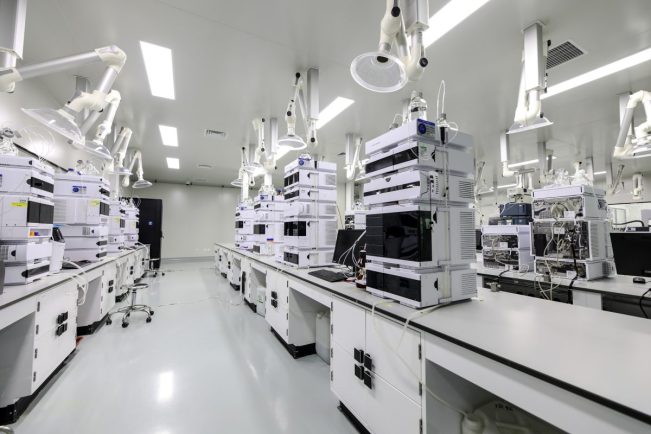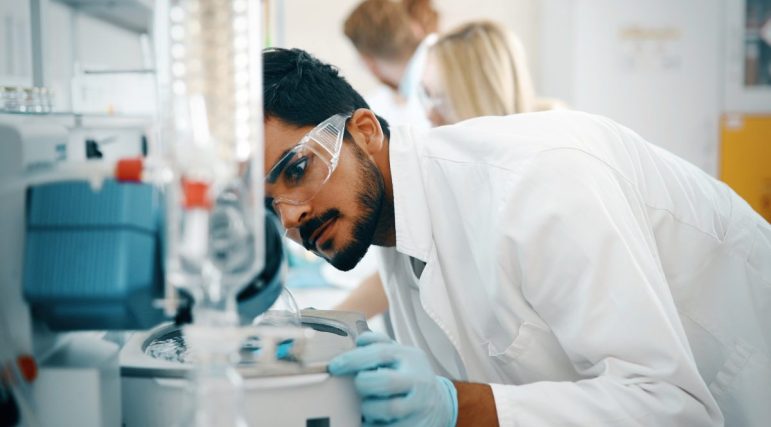In the world of research, maximizing efficiency in the laboratory setting is crucial for achieving optimal results. Whether you’re a seasoned researcher or a newcomer to the field, implementing strategies to streamline processes can significantly enhance productivity and output. This article looks into the top strategies to optimize lab efficiency, shedding light on practical approaches that can transform your lab’s operations.
Ensure Accurate Measurements
Precise measurements are critical in laboratory settings, as even small deviations can significantly impact results. Investing in high-quality equipment, such as diaphragm pumps from KNF, can help ensure accurate fluid handling and metering. These pumps provide stable and consistent flow rates, enabling researchers to precisely control and measure fluid volumes. By prioritizing measurement accuracy, labs can minimize errors and improve the reliability of their data.
Automate Repetitive Tasks
Manual processes can be time-consuming and prone to human error. Automating repetitive tasks, such as sample preparation, data entry, and analysis, can significantly improve lab efficiency. Investing in automated equipment and software solutions can save time, reduce errors, and free up valuable human resources to focus on more complex tasks.
Implement Lean Principles
Lean principles, originally developed in the manufacturing industry, have found their way into the lab environment. Lean methodology focuses on eliminating waste, reducing unnecessary steps, and improving workflow. By identifying and removing non-value-added activities, labs can minimize redundancies and enhance efficiency. This approach encourages continuous improvement, empowering lab personnel to identify bottlenecks and implement solutions.
Optimize Lab Layout and Organization
A well-organized lab space can significantly impact efficiency. Careful planning of the lab layout can ensure that equipment, supplies, and workstations are arranged in a logical and ergonomic manner. Proper labeling, storage, and inventory management systems can minimize time spent searching for materials and reduce the risk of lost or misplaced items. Regular audits and reorganization efforts can help maintain an optimal lab environment.
Implement Standard Operating Procedures (SOPs)
SOPs are detailed, written instructions that outline the steps to be followed in performing specific lab procedures. By establishing and adhering to SOPs, labs can ensure consistency, reduce variability, and minimize the risk of errors. SOPs also facilitate training of new personnel, promoting a seamless transition and maintaining continuity in lab operations.
Equipment Maintenance
Proper maintenance of laboratory equipment is crucial for ensuring smooth operations and minimizing downtime. Regular calibration, cleaning, and servicing of instruments can prevent malfunctions and extend their lifespan. Developing a comprehensive maintenance schedule and adhering to it diligently can save valuable time and resources in the long run. Additionally, investing in reliable and up-to-date equipment can enhance accuracy and reduce the risk of errors, ultimately leading to more efficient workflows.
Encourage Collaboration and Communication
Effective communication and collaboration among lab personnel are essential for optimizing efficiency. Regular team meetings, open discussions, and knowledge-sharing sessions can foster a collaborative environment where ideas and best practices are shared. Encouraging cross-functional collaboration can also help break down silos, facilitating the exchange of expertise and promoting a holistic approach to problem-solving.
Leverage Data Management and Analytics
In the era of big data, labs can harness the power of data management and analytics to drive efficiency. Implementing robust data management systems can ensure accurate record-keeping, facilitate data retrieval, and enable data-driven decision-making. By analyzing performance metrics, labs can identify areas for improvement, track progress, and make informed decisions to optimize processes.
Invest in Training and Professional Development
Skilled and knowledgeable personnel are a lab’s most valuable asset. Investing in ongoing training and professional development can enhance efficiency by equipping staff with the latest knowledge, techniques, and best practices. Regular training sessions, workshops, and opportunities for continuing education can keep lab personnel up-to-date and motivated, leading to improved performance and productivity.
Embrace Lean Lab Design
Lean lab design principles focus on creating a workspace that minimizes waste, promotes efficient workflow, and ensures safety. By incorporating features such as modular workstations, flexible utilities, and ergonomic considerations, labs can optimize space utilization, reduce unnecessary movements, and create an environment conducive to productivity.
Foster a Culture of Continuous Improvement
Cultivating a culture of continuous improvement is crucial for sustaining long-term efficiency in the lab. Encouraging open discussions, feedback loops, and innovation can empower lab personnel to identify areas for improvement and propose solutions. Regular process reviews, root cause analysis, and the implementation of corrective and preventive actions can drive ongoing efficiency gains.
Leverage Technology and Automation
Embracing advanced technologies and automation can significantly enhance lab efficiency. From robotics and artificial intelligence to cloud computing and digital lab management systems, various technological solutions can streamline processes, improve data management, and enhance collaboration. By staying up-to-date with emerging technologies and investing in relevant solutions, labs can future-proof their operations and maintain a competitive edge.
Final Thoughts
Optimizing laboratory efficiency requires a multifaceted approach encompassing streamlined workflows, automation, advanced data management systems, equipment maintenance, protocol standardization, communication, and continuous improvement initiatives. By implementing these strategies, labs can enhance productivity, accelerate research outcomes, and achieve greater scientific impact in their respective fields.













